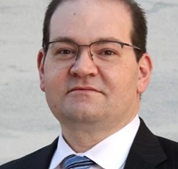BTR: Enterprises Rethink End User Computing Strategies in Age of AI and Cloud Sprawl

Christopher Reed, Omnissa
SILVER SPRING , MD, UNITED STATES, June 12, 2025 /EINPresswire.com/ -- As enterprises race to modernize their IT infrastructure, the need to unify end user computing (EUC) strategies is emerging as an increasingly critical priority, according to Christopher Reed, Chief Technology Officer for the Americas at Omnissa. In a recent BizTechReports executive vidcast interview, Reed urged technology leaders to rethink fragmented endpoint management approaches and move toward an autonomous workspace model capable of reducing risk, enhancing performance, and improving user experience.
Omnissa, a company born from VMware’s end user computing division following its spinout after Broadcom’s acquisition, is now positioning itself as a platform provider for organizations grappling with an increasingly complex digital environment. This shift in positioning comes at a time when organizations are re-evaluating how they support increasingly distributed and device-diverse workforces.
“The biggest misconception I still see is people thinking EUC is just about device management,” Reed said. “What’s missing is a unified, intelligent view of how users work — across devices, locations, and applications.”
Fragmentation at the Edge
Reed observed that many organizations rely on multiple point solutions to manage different types of devices — Macs, PCs, rugged devices, and BYOD environments. This patchwork results in fragmented data, siloed risk assessments, and inconsistent user experiences.
“Each disparate tool can generate valuable data alone, but with that approach, there’s no unifying layer that tells you how the person behind the device is operating,” said Reed. “The result? Gaps in security, productivity losses, and a lack of visibility into employee experience.”
That fragmentation is further exacerbated by cloud sprawl. As enterprises adopt more SaaS applications and integrate systems through mergers and acquisitions, the task of managing endpoints, applications, and security grows exponentially more complex.
According to Forrester, barely half of organizations are currently using Unified Endpoint Management (UEM) for mobile, laptop and desktop security — exposing significant vulnerabilities across complex workspaces in which end-users use multiple devices to access, cloud-connected environments. (https://www.forrester.com/blogs/category/endpoint-security/)
The Rise of the Autonomous Workspace
To address this challenge, Reed advocates for an autonomous workspace — a secure, self-healing, self-configuring platform that enables real-time response and insight across all devices.
“The idea is similar to a self-driving car,” Reed explained. “You want the system to detect abnormal activity, respond automatically, and adjust policies dynamically — all without constant human intervention.”
This vision includes zero-touch provisioning, continuous policy enforcement, and the ability to act on user behavior in real-time through AI-driven orchestration. But achieving that vision requires more than new tools; it demands a shift in how IT organizations govern and prioritize endpoint strategies.
The urgency to secure remote and hybrid endpoints is growing. Forrester reports that 21% of enterprise breaches over the past year stemmed from vulnerabilities in remote work environments — emphasizing the need for intelligent endpoint monitoring and remediation. (https://www.forrester.com/report/the-state-of-data-security-2024/RES181108)
From Nice-to-Have to Must-Have
Historically, endpoint management – especially mobile device management (MDM) – has operated under the jurisdiction of the procurement function. Reed noted that, as a result, it was treated as a cost center focused on managing telecom bills or rolling out mobile device management tools included in broader software packages. But that mindset no longer holds.
“Today’s workforce expects seamless digital experiences,” said Reed. “You can’t retain top talent if you’re handing them outdated tools. And from a security perspective, good enough isn’t good enough anymore.”
The new mindset, Reed explained, must treat end user computing as a strategic enabler — not a transactional line item. That means shifting ownership from procurement to technology leadership, aligning EUC initiatives with broader business goals such as workforce productivity, risk mitigation, and operational agility. Rather than merely deploying tools, organizations must orchestrate experiences — ensuring that every endpoint, from laptops to mobile devices to virtual desktops, contributes to a secure, responsive, and intuitive digital environment.
Industry forecasts validate this urgency. The global Unified Endpoint Management market is expected to surge from $13.34 billion in 2025 to $118.91 billion by 2033, growing at a CAGR of 31.45%. (https://straitsresearch.com/report/unified-endpoint-management-market)
This explosive growth reflects the rising enterprise demand for integrated solutions that manage, secure, and optimize a wide array of devices.
A Case for Platform Thinking
Reed stressed that trying to layer new capabilities on top of legacy point solutions in an unstructured manner often leads to inefficiency and spiraling costs.
“I’ve worked with customers who added three more tools just to manage Windows endpoints — all on top of their ‘free’ included solution,” he said. “We say in the South, there are no free puppies. You still have to feed and care for them.”
Simply adding capabilities to out–of-the-box management features from providers for whom comprehensive device management is not a core competency results in a more complicated and less intuitive outcome – which is not good for the user experience. Moreover, the approach typically adds new dependencies and potential failure points, elevating risk exposure.
A platform-based approach, Reed argues, allows organizations to consolidate workflows, normalize data streams, and make smarter decisions across the enterprise. While switching platforms may seem costly upfront, the total cost of ownership often drops when factoring in tool sprawl, support overhead, and lost productivity.
“As a result, organizations that standardize on a unified EUC platform often see a net reduction in per-user spend,” Reed noted. “But more importantly, they gain agility and insight.”
Who Owns the Experience?
One of the most pressing questions is: who in the organization should own this transformation?
Reed believes the conversation must start at the executive level. “If CIOs and CTOs aren’t at the table defining the vision, you’ll end up with engineers picking tools based on preference — not strategy,” he said. “It is important to move away from existing tactical perspectives on endpoint management to see what is really at stake. You can’t manage a modern enterprise endpoint strategy the same way you manage a phone bill.”
He recommends organizations bring key stakeholders together — without vendors in the room — to align on what outcomes they want: security, productivity, cost control, or all three.
“Ask yourselves: Are we just managing a Mac, or are we creating an experience that enables people to create value – regardless of the devices they use?” said Reed.
Centralized, Decentralized — or Both?
Performance concerns often arise when centralizing EUC through a platform. But Reed points out that modern application architectures — including progressive web apps and virtualization — allow for centrally distributed computing models.
“Some apps work better at the edge, others in the data center. A good EUC platform gives you the choice,” Reed said. “It’s not either/or. It’s about delivering the right performance at the right time, with unified policy enforcement across all touchpoints.”
To this point, Gartner predicts that by 2027, more than 50% of enterprise-managed data will be created and processed outside the data center or cloud, highlighting the growing need for flexible computing strategies that encompass both edge and centralized resources. (https://www.gartner.com/en/newsroom/press-releases/2023-10-30-gartner-says-50-percent-of-critical-enterprise-applications-will-reside-outside-of-centralized-public-cloud-locations-through-2027)
This finding underscores the need for more flexible, edge-aware end user computing (EUC) strategies. Enterprises can no longer rely solely on centralized systems and must adopt EUC platforms that enable consistent performance, security, and policy enforcement across both edge and core environments. This shift requires moving beyond device management to orchestrating seamless, intelligent user experiences across a distributed infrastructure. Ultimately, modern EUC strategies must support centrally distributed architectures that align with how and where work is actually happening.
Final Thought: Begin the Conversation
Reed concludes with a call to action: “Start the conversation. Ask why you’re doing things the way you are. Invite cross-functional leaders into the room. The future of work depends on it.”
As enterprises look to AI and automation to streamline operations and manage risk, end user computing can no longer be an afterthought. Instead, it must be treated as a strategic pillar — one capable of driving productivity, enabling innovation, and safeguarding enterprise assets in a distributed, cloud-connected world.
To read the Q&A with Omnissa's Christopher Reed click here.
Airrion Andrews
BizTechReports
email us here
Legal Disclaimer:
EIN Presswire provides this news content "as is" without warranty of any kind. We do not accept any responsibility or liability for the accuracy, content, images, videos, licenses, completeness, legality, or reliability of the information contained in this article. If you have any complaints or copyright issues related to this article, kindly contact the author above.
Valor Tax Relief Expands Nationwide Presence While Founder Karim Hanna Builds Community and Gives Back Globally
American haute couture documentary up for accolades
After Nearly 30 Years of Service, Greentrike CEO to Pass the Torch
Więcej ważnych informacji
 Jedynka Newserii
Jedynka Newserii

 Jedynka Newserii
Jedynka Newserii

Konsument

Polacy nie korzystają z hossy trwającej na warszawskiej giełdzie. Na wzrostach zarabiają głównie inwestorzy zagraniczni
Od października 2022 roku na rynkach akcji trwa hossa, nie omija ona także warszawskiej giełdy. Mimo to inwestorzy indywidualni odpowiadają zaledwie za kilkanaście procent inwestycji, a o wzrostach decyduje i na nich zarabia głównie kapitał z zagranicy. Widać to również po napływach i odpływach do i z funduszy inwestycyjnych. Zdaniem Tomasza Koraba, prezesa EQUES Investment TFI, do przekonania Polaków do inwestowania na rodzimej giełdzie potrzeba zysków z akcji, informacji o tych zyskach docierającej do konsumentów oraz czasu.
Polityka
Obowiązek zapełniania magazynów gazu w UE przed sezonem zimowym ma zapewnić bezpieczeństwo dostaw. Wpłynie też na stabilizację cen

Unia Europejska przedłuży przepisy z 2022 roku dotyczące magazynowania gazu. Będą one obowiązywać do końca 2027 roku. Zobowiązują one państwa członkowskie do osiągnięcia określonego poziomu zapełnienia magazynów gazu przed sezonem zimowym. Magazyny gazu pokrywają 30 proc. zapotrzebowania Unii Europejskiej na niego w miesiącach zimowych. Nowe unijne przepisy mają zapewnić stabilne i przystępne cenowo dostawy.
Infrastruktura
Gminy zwlekają z uchwaleniem planów ogólnych zagospodarowania przestrzennego. Może to spowodować przesunięcie terminu ich wejścia w życie

Reforma systemu planowania i zagospodarowania przestrzennego rozpoczęła się we wrześniu 2023 roku wraz z wejściem w życie większości przepisów nowelizacji ustawy z 27 marca 2003 roku. Uwzględniono w niej plany ogólne gminy (POG) – nowe dokumenty planistyczne, za których przygotowanie mają odpowiadać samorządy. Rada Ministrów w kwietniu br. uchwaliła jednak ustawę o zmianie ustawy z 7 lipca 2023 roku, a jej celem jest zmiana terminu obowiązywania studiów uwarunkowań i kierunków zagospodarowania przestrzennego gmin na 30 czerwca 2026 roku. Wskazana data może nie być ostateczna z uwagi na to, że żadna z gmin nie uchwaliła jeszcze POG.
Partner serwisu
Szkolenia

Akademia Newserii
Akademia Newserii to projekt, w ramach którego najlepsi polscy dziennikarze biznesowi, giełdowi oraz lifestylowi, a także szkoleniowcy z wieloletnim doświadczeniem dzielą się swoją wiedzą nt. pracy z mediami.








.gif)

 |
| |
| |
|